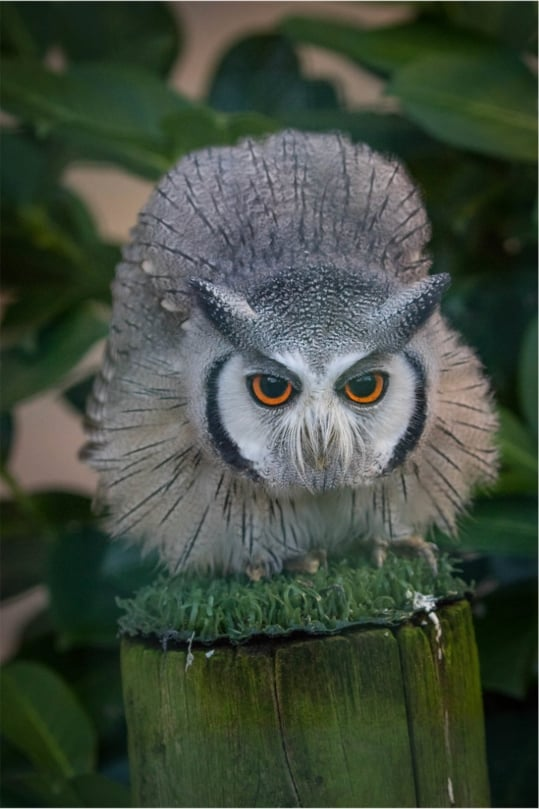Photo by Faruk Kizil
Habichtskauz auch Uralkauz
Das Bild entstand an einer Futterstelle beim Falkner in den Niederlande.
Ural owl (Strix uralensis)
The picture was taken at a feeding place of a falconer in Netherlands.
One of the given translations called this Habich’s Owl, so I tried to find out who Habich was. Took me way too long to figure out Habich was not a person, it means goshawk in German. The German wiki entry had a lot of info the US one didn’t though.
The species is referred to as Slaguggla, or “attacking owl”, in Swedish, Habichtskauz, or “goshawk-owl”, in German or as the “long-tailed owl” in Russian.
Attempts to re-introduce the owl have been partly successful in the German-Austrian-Czech border region (Bavarian Forest , Bohemian Forest , and Šumava), and most recently in the Vienna Woods.
Austria seems to have a difficult time with the project as people keep shooting them. 🙄


The german language has two words for “owl”: “Eule” and “Kauz”. I’m a native speaker, but I had to look up what the difference is (Wikipedia/Deepl):
“Eule” means “owl”.
“Kauz” also means owl, but specifically the small, fat and grumpy looking kind:
That’s literally it, it has nothing to do with biology. So the correct translation would be “grumpy-looking goshawk owl”. 😉
Wow, this is beautiful!
I’d heard eule before, but not kauz.
English only has one word, French has chouette and hibou, and Spanish has a lot of words, the main ones being buho (seems most common, and more specifically larger, horned owls), lechuza (barn owls), and the Mexican word tecolote (screech owl or possible pygmy owls, so seems more for small owls rather than horn/no horn). There’s a few more words I’ve seen, but most comments seemed to say if you use anything other than buho or lechuza, no one will know what you’re talking about.
The list of German owls does seem to split between eule and kauz right around the middle. I feel it’s a pretty good system!